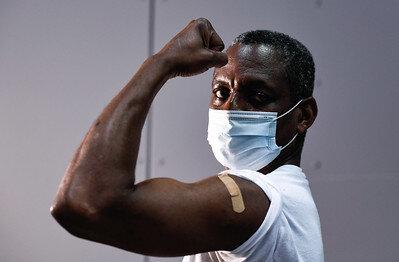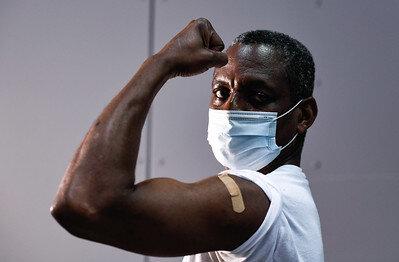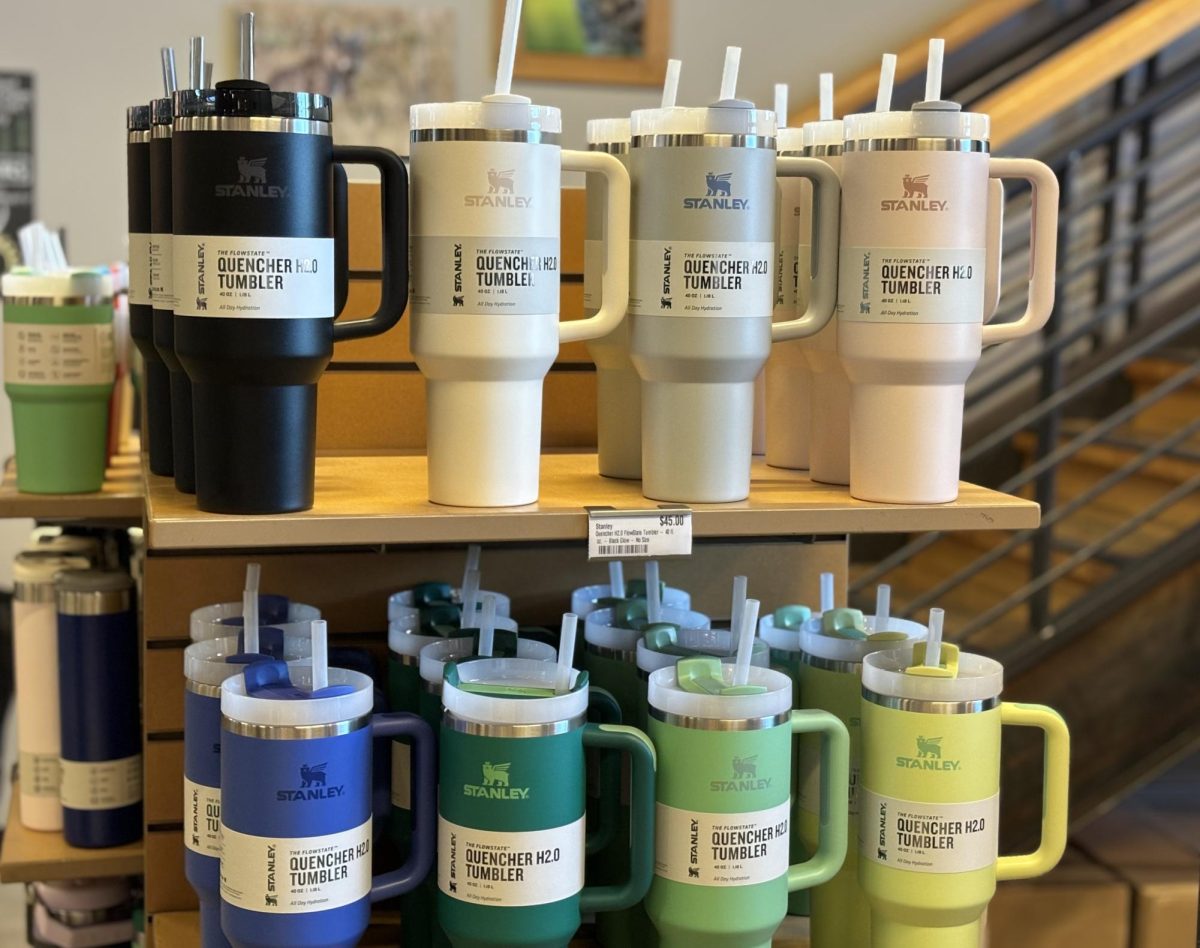In December of 2020, months into the global-wide pandemic, the long-awaited vaccination process for the COVID-19 virus began. According to the New York Times, the virus has killed more than 1.6 million people and sickened more than 76 million over the last year. America is still battling to contain the spread of the deadly virus, but many Americans are hesitant to get the vaccination.
Because large amounts of the vaccine are not currently available, the Center for Disease Control is implementing a tiered-plan to ensure that those in the community who are most at risk are receiving their vaccinations first. Currently, the vaccines are only being offered to healthcare workers, long-term care facility residents, and people 75 years of age or older.
“As of Wednesday, 76,936 doses of the Pfizer-BioNTech and Moderna vaccine have been administered to Sonoma County residents, the equivalent of one dose going to 15.4% of the total population,” stated a Press Democrat article from this past week.
“However, most bordering counties continue to outpace Sonoma County in vaccinating their populations,” the Press Democrat article continued. “Napa (19.0%), Marin (18.2%) and Mendocino (17.1%) all have delivered more doses on a per capita basis.” Overall, Sonoma County has the 12th highest vaccination rate among the state’s 58 counties, according to data compiled by the State Department of Public Health.
“In relation to many different counties in California, we’re doing very, very well,” said the Sonoma County Vaccine Chief, Dr. Urmilia Shende. “We’re making progress, and we’re administering doses at a faster rate than other counties of our size.”
On the other hand, Sonoma County’s current rate of vaccination is far from ideal, according to Supervisor Lynda Hopkins. “If we were to vaccinate every single person in Sonoma County, half a million people, multiply that by two because there are two doses, that’s a million. If you’re looking at our current rate of vaccination, we’re talking about three years,” Hopkins said.
The next group of people who will have permission to get the vaccine are frontline essential workers, people aged 16-64 years with underlying medical conditions, and people 65 years of age or older. The CDC established that frontline essential workers include fire fighters, police officers, corrections officers, food and agricultural workers, United States Postal Service workers, manufacturing workers, grocery store employees, public transit workers, and those who work in the educational sector.
Those wondering when the next phase will begin are not alone. “I wish we could give you a specific date for 65 and older, but it depends on our overall supply level, and how quickly we can continue to vaccinate,” Dr. Shende said.
The vaccine is highly sought after and may be our country’s only hope for returning to normalcy in the next few years, but some Americans are reluctant to get it in the first place.
The immunization registry of Sonoma County states that 89.60% of Sonoma County residents are willing to get the vaccine, which means that more than 10% of residents are still unsure about getting the vaccine. This is most likely due to the confusion and mystery that surrounds the vaccine and the virus itself.
Popular myths about the vaccine include claims that the vaccine itself will give recipients COVID-19, it will cause one to test positive for the virus, and that if someone has already been sick with the virus, they don’t need the vaccine because they are immune. These are all myths and have been proven incorrect by rigorous scientific trials.
None of the vaccines in the United States use the live virus. The goal of the vaccine is to teach the human body how to recognize and fight off the virus, which is why one may feel symptoms after their doses. This does not mean that one is becoming infected or sick from the virus. Additionally, the unfortunate truth about the virus is that one can be re-infected, and it’s been seen numerous times in the past year. So, just because someone has had the virus before, that does not mean they are immune and do not need to get the vaccine–they still are recommended to.
A lot of hesitancy in getting the vaccine may stem from lack of knowledge about what the vaccines are, how they work, and what the differences are between the various kinds of vaccines.
According to STAT News, the Pfizer vaccine showed 95% efficiency at preventing symptomatic COVID-19 infection after two doses, while the Moderna vaccine was 94.1% effective after the second dose.
The CDC has established that the “COVID-19 vaccines are safe and effective. Millions of people in the United States have received COVID-19 vaccines, and these vaccines have undergone the most intensive safety monitoring in U.S. history.”
Unfortunately, Pfizer and Moderna’s vaccines “were tested before the emergence of troubling new variants of the virus in Britain, South Africa, and Brazil. It’s not entirely clear how well they will work against these mutated viruses,” STAT News stated.
Thankfully, a sliver of hope remains. Last Friday, Johnson & Johnson announced that a one-dose vaccine is being developed by its vaccines division, Janssen Pharmaceuticals. It has been shown to be 66% protective against moderate to severe COVID-19 infection, in a multicountry study. Johnson & Johnson said it will apply to the Food and Drug Administration for an emergency use authorization this week. That means sometime later this month or early in March, their vaccine will likely start to be used in the United States.
As of Monday, Sonoma County has reported 26,189 positive Coronavirus tests and 265 deaths, according to county data. 45,681 vaccine doses have been administered. The war against the COVID-19 virus is far from over, and it is time that everyone takes responsibility for the perpetuation of this deadly virus. Healthcare and other essential workers have carried the most weight when it comes to this virus, and now that a vaccine is beginning to be administered, regular civilians need to, as they say, “pull themselves up by their bootstraps” and go get the vaccine–of course, only when they have received permission and their phase begins.
We are living in a frightening and unprecedented time, one that most American citizens have never experienced before. There is so much mystery surrounding the virus and vaccine, but there also is a lot of misinformation being spread. If you are fearful of receiving the vaccine, do some research. The more knowledge you have about it, the less frightening it will be.
For our own health and wellbeing, as well as those around us, we need to be brave and take advantage of the help that is being provided. It is time that regular Americans step up and take it upon themselves to help contain the spread of COVID-19. Wearing a mask and social distancing is not enough, and we have seen that in the past year. People will continue to die, unless something changes.
The discomfort and anxiety one feels towards the vaccine is far less troubling than the sadness one feels when they lose a loved one to COVID-19. The vaccine could help prevent this. It is a small risk to possibly save ourselves and those around us from a deadly virus. Additionally, if we, as a community, want to return to a somewhat normal life, like before the pandemic, we need to get vaccinated as quickly as possible.





![[Both photos courtesy of sonoma.edu]
Ming-Ting Mike Lee stepped in as the new SSU president following Sakakis resignation in July 2022](https://sonomastatestar.com/wp-content/uploads/2024/04/CC4520AB-22A7-41B2-9F6F-2A2D5F76A28C-1200x1200.jpeg)



























